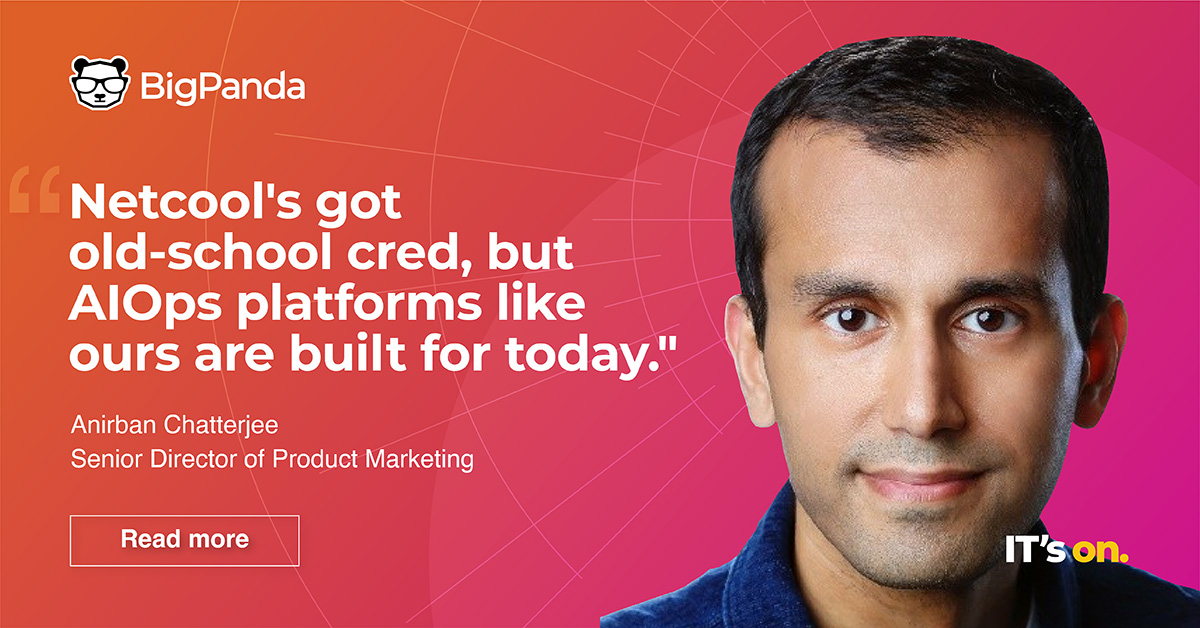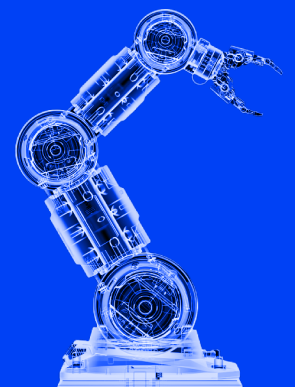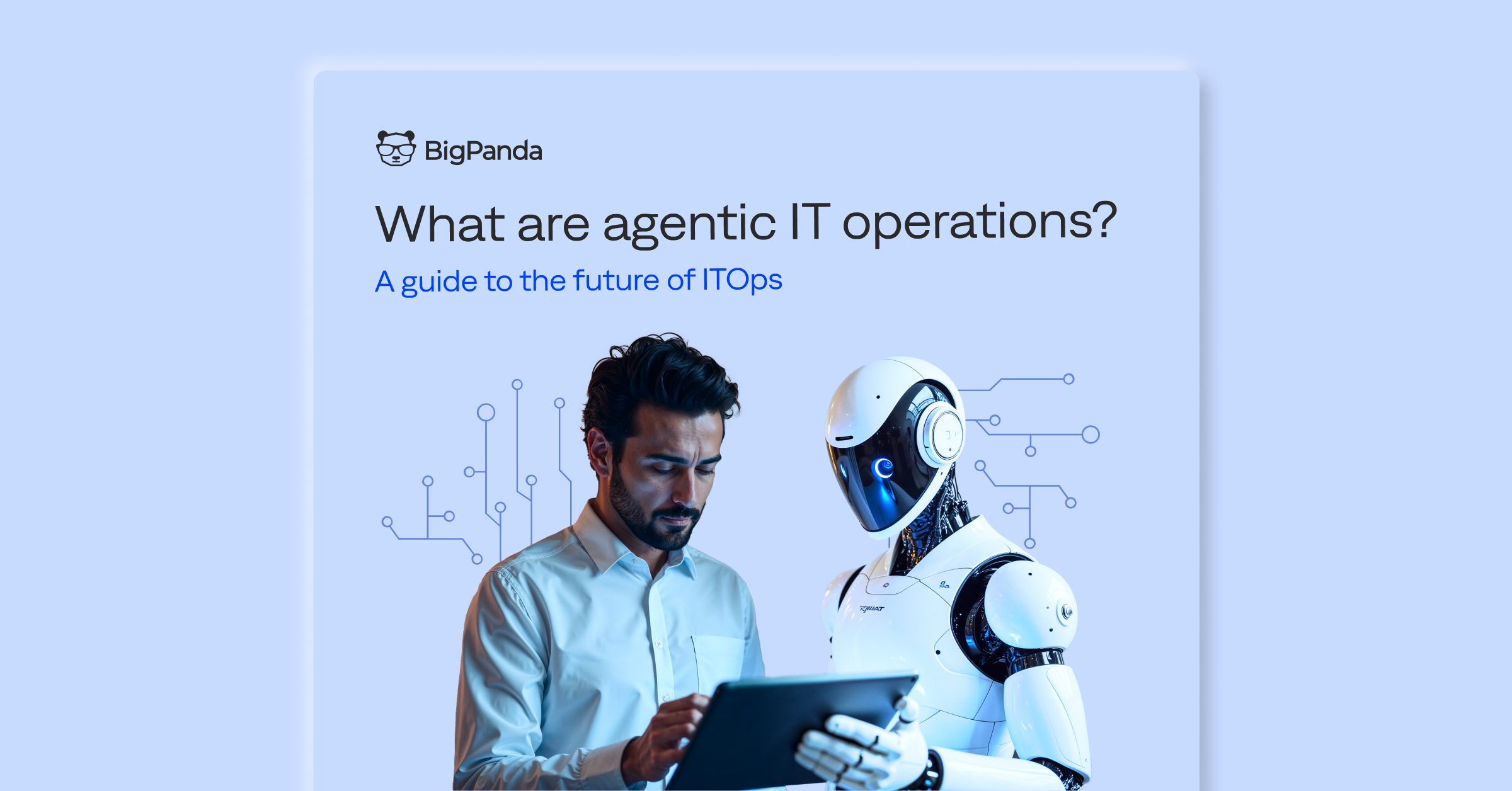Four key takeaways from our recent webinar: BigPanda picks up where Netcool left off

For years, Netcool has been omnipresent in many IT Operations organizations. That, combined with the sheer utility it once brought to the table, sometimes gave it a special sort of nostalgic reverence in IT Operations circles.
But with all due respect to Netcool, there’s also little doubt the platform’s real-world utility has waned in the era of cloud and hybrid ops. This was discussed in some detail recently by our VP of Product Marketing, Mohan Kompella, and our RVP of Sales Engineering, Ken Serembus.
It’s a bittersweet notion for grizzled IT Ops and NOC veterans with fond memories of Netcool to reckon with, Mohan and Ken noted—but a crucial one to explore as organizations search for new and better ways to correlate, analyze and act on their monitoring and alert feeds—instead of just stopping after aggregating events and alerts from different monitoring tools.
Here are a few key takeaways from the webinar now. When finished, you can view the entire, in-depth talk—including real advice from our Netcool veterans and some high-level best practices to consider—at this link.
Takeaway 1: Legacy event management tools don’t shoehorn well
It seems obvious, but it’s still an ethos worth applying to the tools watching your tools. Simply moving from on-prem to cloud and hybrid alternatives greatly complicates the equation for legacy monitoring systems.
“IT Operations itself has been broken by modern software development and the cloud,” Mohan notes in the webinar. Throw in the transition to hybrid cloud, microservices and CI/CD pipelines, and the truth of that statement becomes even more evident. Legacy tools, both monitoring and management, that aren’t built to suit that reality must be reevaluated in a hurry—and replaced with solutions more closely aligned to the evolving organization’s needs.
Takeaway 2: The skills to keep them going are increasingly rare
…and thus, increasingly expensive on the job market. This means that finding people capable of adapting legacy tools to modern IT environments will only become more difficult as the technologies companies use evolve and the legacy monitoring and event management solutions they rely on don’t.
Instead of frustrating IT Operations teams with “lots of brittle rules to maintain,” Ken notes, AIOps platforms like BigPanda make adapting easier because they don’t require endless adaptations and vanishingly rare skill sets to keep relevant.
Takeaway 3: Scaling costs are no fun for anyone
“The sheer cost of [having to] maintain a legacy event solution is really something that people struggle with.” While blunt, Ken’s words ring true for anyone tasked with bridging the gap between an aging (but essential) tool and a modernizing tech stack.
Between the costs of keeping the right skills on staff and the very real effort and expense that come from continually “teaching” a legacy platform how to live in the new landscape, it’s almost always cheaper to let a modern replacement take the helm.
Takeaway 4: AI and ML are great—explainable AI and ML are better
What makes an artificial intelligence (AI) or machine learning (ML) scheme providing correlation insights “explainable?” Per Ken’s definition in the webinar, the best explainable tools are those that allow users to “really understand why something was correlated, as opposed to a black-box” where the correlations come without much explanation or testability.
It’s a key point for decision-makers to ponder as they weigh potential (and inevitable) investments in AI: a platform that allows manual testing and configuration of correlations will always be better in the long term than one that doesn’t.
As with many of our webinars, there’s a lot more here to cover than one blog post can convey! For the rest of the story, turn to our full webinar: BigPanda picks up where Netcool left off.




